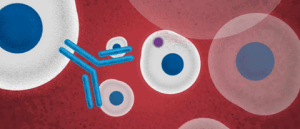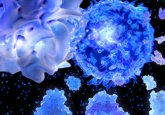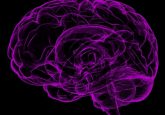The neural pathway that signals toxin-induced vomiting

How do our bodies recognize the ingestion of unwanted bacteria and initiate vomiting?
If you experience emetophobia (the fear of vomiting), it might be best to skip this article – or grab a bucket. A collaboration of researchers led by a group from the National Institute of Biological Sciences (Beijing, China) has mapped out the neural pathways responsible for vomiting after eating contaminated food. This new understanding could improve anti-nausea medications for cancer patients undergoing chemotherapy.
Vomiting is not fun, but it’s our body’s way of getting rid of toxins that arise after ingesting foodborne bacteria. It was not known how exactly signals are transmitted from the gut to the brain to initiate this defensive response because vomiting cannot be studied in mice. This is because rodents cannot vomit, which is thought to be due to their long esophagus and weak muscle strength compared to their body size. This means that previous research on vomiting has been done in other animals, like cats and dogs. These were not studied comprehensively, hence the mechanism of nausea and vomiting remained elusive.
While mice might seem lucky to never experience vomiting, the research team noticed that they actually do retch, and therefore do experience the urge to vomit.
 No food for 2 days keeps the doctor away: the impact of fasting on infection
No food for 2 days keeps the doctor away: the impact of fasting on infection
Fasting in mice impacts the strength of a gastrointestinal infection and the subsequent damage caused, reveals a new study highlighting how the microbiome links fasting and infection.
To study the neural mechanism of retching in mice, the researchers administered a common bacterial toxin produced by Staphylococcus aureus, Staphylococcal enterotoxin (SEA), which leads to foodborne illnesses in humans. Mice that were given SEA were observed to have episodes of unusual mouth opening and opened their mouths at wider angles than those in the control group, who received saline water. Additionally, during such episodes, the diaphragm and abdominal muscles contracted simultaneously, which occurs in dogs when they are vomiting. When animals are breathing normally, their diaphragm and abdominal muscles contract alternatively.
“The neural mechanism of retching is similar to that of vomiting. In this experiment, we successfully build a paradigm for studying toxin-induced retching in mice, with which we can look into the defensive responses from the brain to toxins at the molecular and cellular level,” explained Peng Cao, the corresponding author of the paper.
A toxin that activates the release of serotonin was found in the intestine of mice treated with SEA. Serotonin is a neurotransmitter that is released by enterochromaffin cells on the lining of the intestinal lumen, which is the space inside the bowels. The researchers found that serotonin binds to receptors on vagal sensory neurons that are in the intestine, which then transmits the signal along the vagus nerves from the gut to Tac1+DVC neurons in the dorsal vagal complex in the brain stem.
To explore this mechanism further, the researchers inactivated the Tac1+DVC neurons. They found that the SEA-treated mice with inactivated Tac1+DVC neurons retched less compared to those with normal Tac1+DVC neuron activities.
 Bust the gut: novel drug delivery method targets the colon to treat IBD
Bust the gut: novel drug delivery method targets the colon to treat IBD
By coating a capsule with a polymer that can be broken down by gut microbes, a team of scientists has developed a new targeted oral infliximab treatment for people with inflammatory bowel disease (IBD).
The team also explored if chemotherapy drugs activate the same neural pathway, as these induce defensive responses including nausea and vomiting. The researchers injected mice with a common chemotherapy drug, doxorubicin, finding that it made the mice retch. When their Tac1+DVC neurons or serotonin synthesis from enterochromaffin cells were inactivated, retching was reduced. This helps to explain why anti-nausea medication that blocks serotonin receptors works, such as anti-nausea medication currently prescribed to chemotherapy recipients including Granisetron.
Cao and the team are now planning to explore how toxins act on enterochromaffin cells. Preliminary findings show that enterochromaffin cells don’t sense toxins directly, but instead, a series of complex immune responses from damaged cells in the intestine are likely to be involved.
“In addition to foodborne germs, humans encounter a lot of pathogens, and our body is equipped with similar mechanisms to expel these toxic substances,” said Cao. “For example, coughing is our body’s attempt to remove the coronavirus. It’s a new and exciting field of research about how the brain senses the existence of pathogens and initiates responses to get rid of them.”
Future research into these neural mechanisms may lead to improved targets for drugs, including anti-nausea medicines.





